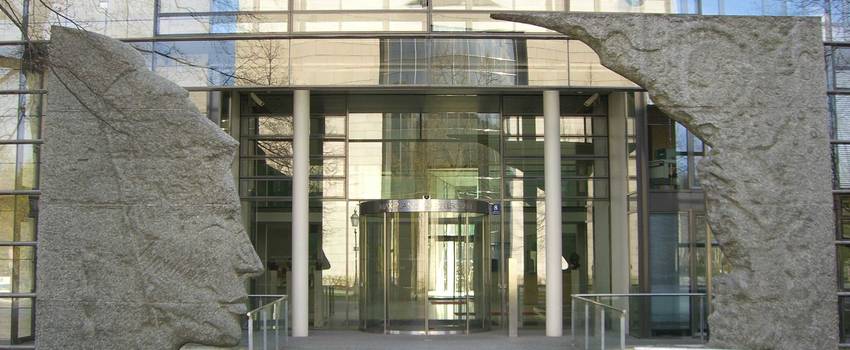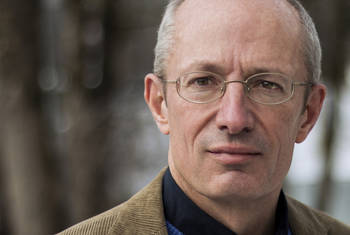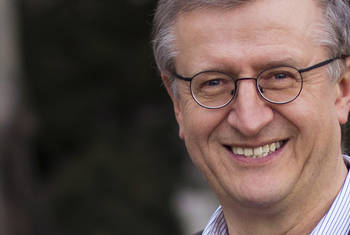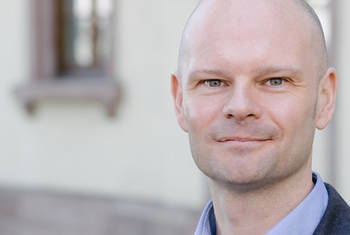Thomas Pfeifer How Can the Motion of Electrons Be Changed by Short Pulses of Laser Light?
Thomas Pfeifer is Director of the Division ‘Quantum Dynamics and Control’ at the Max Planck Institute for Nuclear Physics. Previously, he was Research Group Leader at the same Max Planck Institute and Postdoctoral Research Fellow at the University of California at Berkeley. His research interests are currently focused on fundamental quantum dynamics and control, including time-resolved dynamics in atoms and molecules as well as free-electron laser physics and technology. In 2013, he received the Heinz-Maier-Leibnitz Award from the German Research Foundation (Deutsche Forschungsgemeinschaft, DFG).
Area of Research
Atomic, Molecular, and Optical (AMO) Physics, Strong-Field Laser Physics
since 2014
Director
Max Planck Institute for Nuclear Physics
Division "Quantum Dynamics and Control"
2009-2014
Research Group Leader
Max Planck Institute for Nuclear Physics
2005-2008
Postdoctoral Research Fellow
University of California, Berkeley
2004
Scientific Assistant
University of Würzburg (Julius-Maximilians-Universität Würzburg)
2001-2004
Research Associate
University of Würzburg (Julius-Maximilians-Universität Würzburg)
2000
Graduate Research Assistant
University of Würzburg (Julius-Maximilians-Universität Würzburg)
2004
PhD
University of Würzburg (Julius-Maximilians-Universität Würzburg)
2001
M.A.
University of Texas
1996-1999
Undergraduate Student
University of Würzburg (Julius-Maximilians-Universität Würzburg)
- Science
- Nature
- Nature Physics
- Nature Photonics
- Physical Review Letters
- Physical Review A
- Physical Review X
- The European Physical Journal D
- Optics Letters
- Optics Express
- Optics Communications
- New Journal of Physics
- Applied Physics B
- Applied Optics
- Journal of Chemical Physics
- Computer Physics Communications
- Journal of Laser Micro/Nanoengineering
- Laser and Photonics Reviews
- Physics Today
- New Scientist UK
- Deutsche Physikalische Gesellschaft (DPG)
- Americal Physical Society (APS)
- Optical Society of America (OSA)
Prizes
- Heinz-Maier-Leibnitz Award of the DFG (German Research Foundation) (2013)
- Selected as a “Future Leader” for 'Science and Technology in Society' Forum Kyoto, Japan, invited by the Japanese Society for the Promotion of Science (JSPS) and the New York Academy of Sciences (NYAS) (2011)
- Award “Most Notable International Researchers” by the Office for Services for International Students and Scholars (SISS) at the University of California, Berkeley (2006)
- Science Award of the "Unterfränkische Gedenkjahrstiftung für Wissenschaft" (2005)
- Wilhelm Conrad Röntgen - Science Award of the University of Würzburg, Germany (2004)
Fellowships
- Alexander von Humboldt - Foundation (AvH) Feodor-Lynen Fellowship (2005-2008)
- DAAD Deutscher akademischer Austauschdienst (German Academic Exchange Program) (1999-2000)
- ERC Consolidator Grant X-MUSIC (X-Ray Multidimensional Spectroscopy and Impulsive Control) (2014)
- DFG PF 790/1-1 (Structural and Multi-Dimensional Spectroscopy of Atoms and Molecules on ultrafast time scales using CEP-controlled Few-Cycle Light Fields and (continuum–continuum) High-Harmonic Generation (2012)
 © Maximilian Dörrbecker
© Maximilian Dörrbecker
Max Planck Society
"The Max Planck Society is Germany's most successful research organization. Since its establishment in 1948, no fewer than 18 Nobel laureates have emerged from the ranks of its scientists, putting it on a par with the best and most prestigious research institutions worldwide. The more than 15,000 publications each year in internationally renowned scientific journals are proof of the outstanding research work conducted at Max Planck Institutes – and many of those articles are among the most-cited publications in the relevant field." (Source)
Institute
Max Planck Institute for Nuclear Physics
The Max-Planck-Institut für Kernphysik (MPIK) is one out of 83 institutes and research establishments of the Max-Planck-Gesellschaft zur Förderung der Wissenschaften (MPG) (Max Planck Society for the Advancement of Science). The MPG was founded in 1948 as successor to the Kaiser-Wilhelm-Gesellschaft (established in 1911) and is committed to basic research.
The MPIK has been founded in 1958 under the leadership of Wolfgang Gentner. Its precursor was the Institute for Physics at the MPI for Medical Research led by Walther Bothe from 1934 to 1957. The initial scientific goals were basic research in nuclear physics and the application of nuclear-physics methods to questions concerning in the physics and chemistry of the cosmos. Since 1966 the MPIK is led by a board of directors. Today, the activities concentrate on the two interdisciplinary research fields quantum dynamics and astroparticle physics. (Source)
Map
THOMAS PFEIFER is interested in the origins of motion: how, on an atomic level, motion is coming into play and how this motion that is initially described by the laws of quantum mechanics then transfers into the classical motion we can see. For this, researchers employ a combination of spectroscopy and laser methods. The specific research question presented in this video investigates how a very fundamental system, such as an atom with just one or two electrons, interacts with an intense pulse of laser light on a very short time scale. Exposing the helium atom in their experiments to very short pulses of laser light, the researchers gained an understanding of the way how two, or more electrons – even in larger molecules – are moving and how they can control the motion of these electrons. This observation offers new opportunities to understand quantum motion, and eventually laser control chemical reactions.
LT Video Publication DOI: https://doi.org/10.21036/LTPUB10444
Lorentz Meets Fano in Spectral Line Shapes: A Universal Phase and its Laser Control
- Christian Ott, Andreas Kaldun, Philipp Raith, Kristina Meyer, Martin Laux, Jörg Evers, Christoph H. Keitel, Chris H. Greene and Thomas Pfeifer
- Science
- Published in 2013









